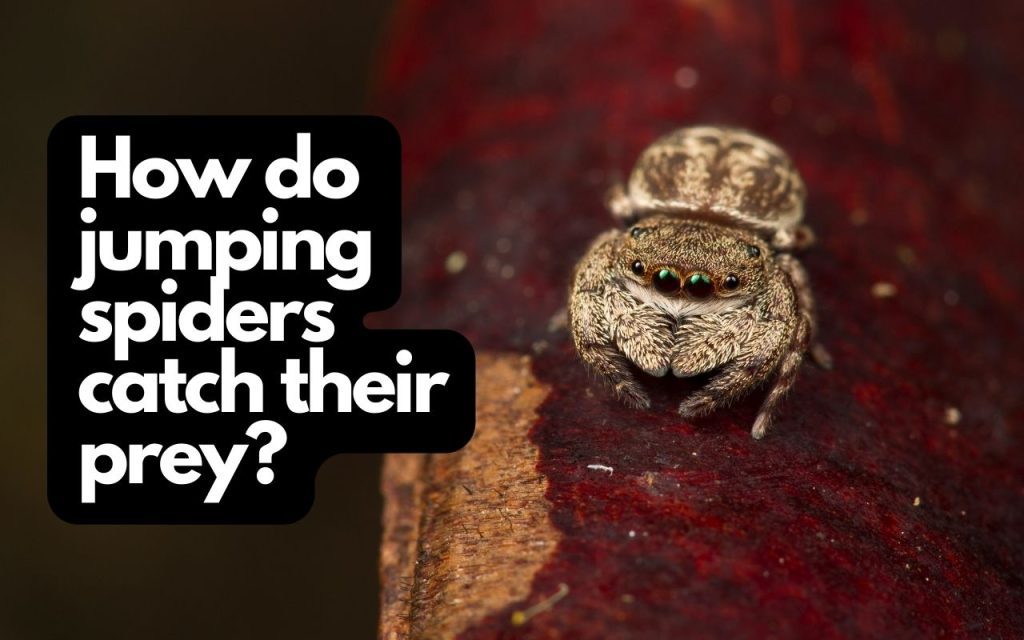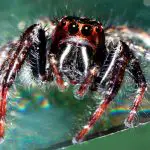If you’ve been to this blog a few times, you’ll have noticed that I’m quite obviously obsessed with spiders. That said, not all spiders are created equal!
Of all the spider species I’ve encountered, jumping spiders, or those belonging to the family Salticidae, have consistently intrigued me with their extraordinary hunting strategies. Today, I’m thrilled to share my insights and observations as we explore the question: How do jumping spiders catch their prey?
Renowned for their remarkable hunting skills, jumping spiders exhibit fascinating behaviors that set them apart from other arachnid species. Unlike their web-spinning counterparts who patiently wait for prey to fall into their intricate traps, jumping spiders actively stalk and hunt down their meals. Their strategy hinges on two primary attributes: their incredible visual capabilities and astonishing agility.
Visual Acuity: Unparalleled Among Arachnids
Jumping spiders boast an exceptional vision, considered the best among arachnids, a group known more for tactile than visual acuity. Equipped with four pairs of eyes, each serving distinct functions, these spiders use their vision to detect, stalk, and accurately gauge the distance to their prey.
Here’s a more in-depth look at the roles of their eyes:
- Predatory focus: The anterior median eyes, the largest pair, have evolved to be incredibly sharp. This pair can adjust its focus, much like a camera lens, giving the spider a detailed view of its prey and surroundings.
- Broad peripheral vision: The remaining three pairs of eyes, though not as sharp, provide a wide field of view, functioning as motion detectors. They enable the spider to perceive movements from various directions, alerting it to potential prey and predators alike.
- Superior depth perception: Working in synergy, the spider’s multiple eyes grant superior depth perception. This attribute is vital for accurately gauging the distance to their target, helping the spider time its leaps to perfection.
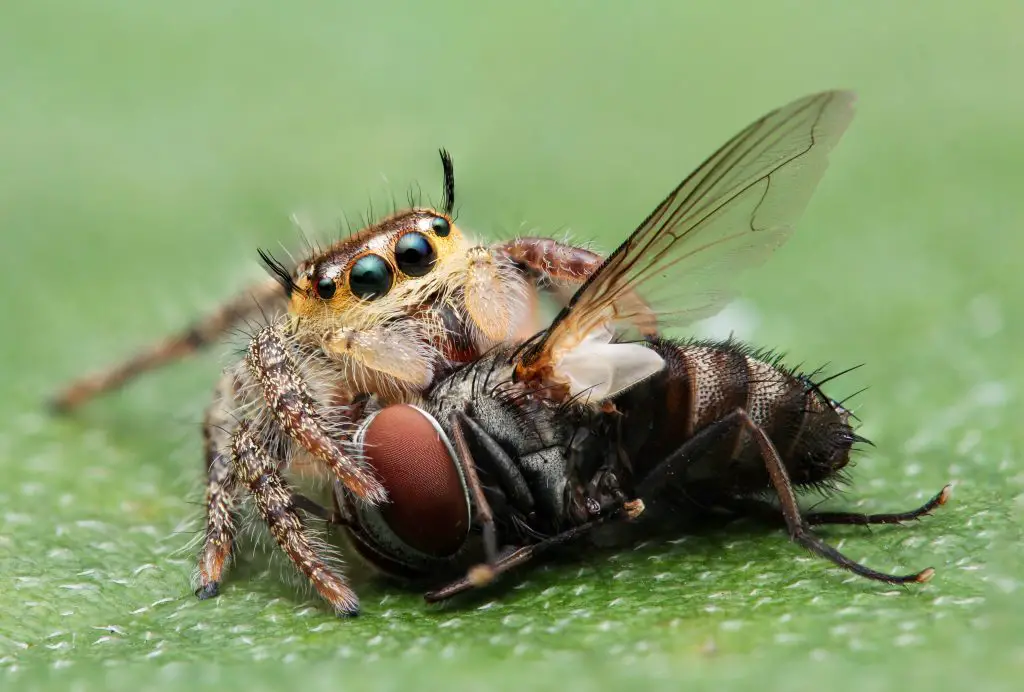
Agility is the name of the Game
As their name suggests, jumping spiders are masters of movement, possessing the ability to jump up to 50 times their body length. Coupling this agility with their precise vision, these spiders have honed a remarkable method of hunting their prey.
Let’s dissect their hunting strategies based on their agility:
- Stealthy approach: When a potential meal is spotted, jumping spiders do not rush in. Instead, they employ a stealthy approach, slowly and carefully creeping closer to their prey to avoid alerting it.
- Precision jumping: Once within striking distance, they perform a precision leap onto their prey. This leap is accurately calculated, utilizing their excellent depth perception to ensure successful contact.
- Safety line: As a safety measure, jumping spiders always anchor a silk thread to their starting point before making a leap. This silk tether allows them to return to their original position if the jump misses or if they need to retreat.
- Rapid response: Jumping spiders are agile creatures, not just in movement but also in reflexes. If a prey attempts to escape, the spider’s quick reflexes enable it to adjust its trajectory mid-jump, often leading to successful captures despite the initial evasion.
Behavioral Tactics: Intelligence and Ingenuity at Play
Jumping spiders are not just physical hunters; they also employ sophisticated behavioral strategies. They display an astonishing level of intelligence, exhibiting behaviors that reveal a capacity for learning, problem-solving, and adaptation.
Here are some intriguing tactics employed by jumping spiders:
Mimicry: Some species have evolved to mimic ants or other insects, a tactic that allows them to approach their prey without arousing suspicion. It’s a clever strategy that underscores the adaptability of these spiders.
Patience: Despite their agile nature, jumping spiders can be remarkably patient when hunting. They’re capable of remaining motionless for extended periods, seizing the opportunity to strike when the moment is just right.
Problem-solving: Jumping spiders are known for their capacity to learn from experience. If a hunting strategy fails, they’re capable of changing their approach, indicating a level of problem-solving and learning that’s rare among invertebrates.
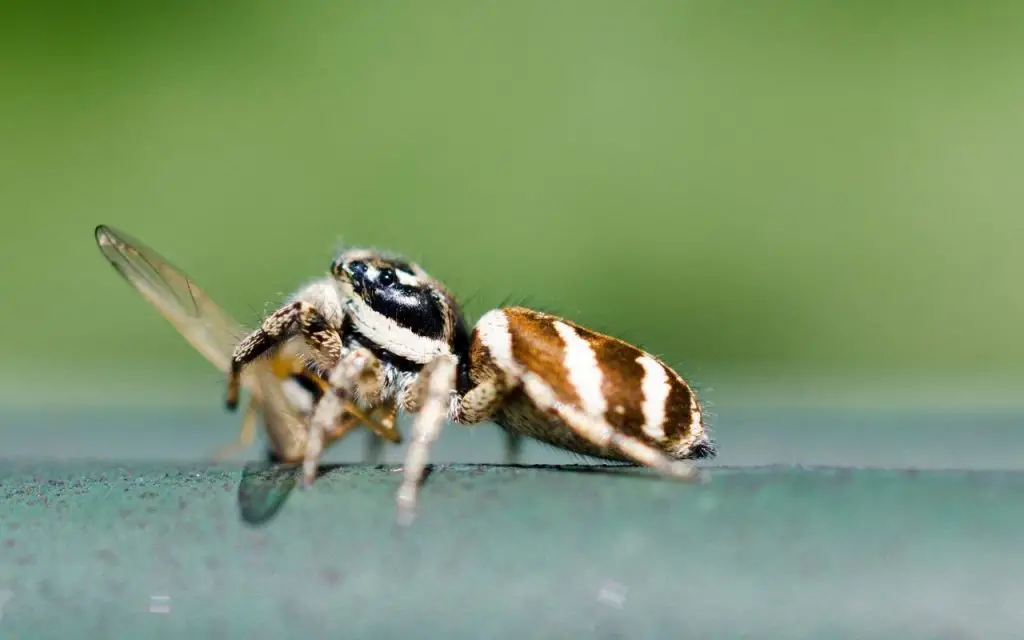
Capturing the Prey: The Final Leap and Strike
The climax of the hunt is the final leap, a sudden, swift movement that culminates in the capture of the prey. The jumping spider pounces on its victim, immobilizing it with venom injected through its chelicerae (fangs). The spider then drags its catch to a safe location, where it consumes the meal at its leisure.
Wrapping up
For an arachnid lover like myself, watching jumping spiders hunt is like observing a beautiful, intricate dance – a dance that showcases the physical agility, keen eyesight, and intelligent strategies of these creatures. It is a testament to the incredible adaptability of spiders and nature’s ingenuity in survival tactics.
In sharing this insight into the hunting strategies of jumping spiders, I hope to inspire a sense of admiration for these remarkable arachnids. Remember, the essence of appreciating spiders lies not just in their beauty or novelty, but in understanding their behaviors, recognizing their roles in the ecosystem, and fostering an environment that allows them to thrive.
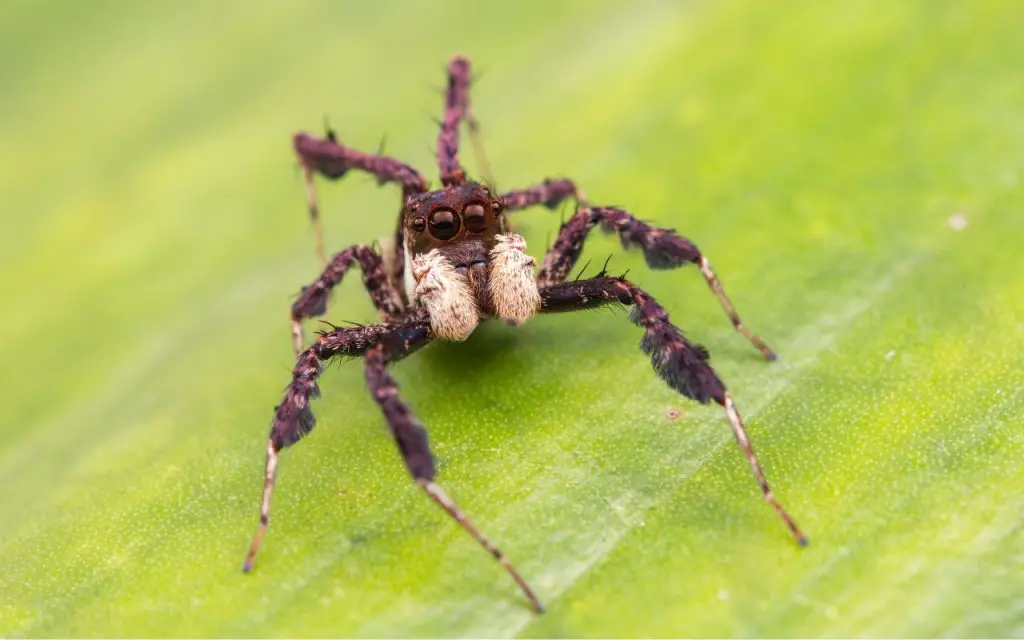
FAQ relating to how jumping spiders catch their prey:
How do spiders catch their prey without a web?
Although many of the spiders we notice when outdoors do indeed build webs, there are literally thousands of highly successful species that don’t. Instead, these species rely on their speed and sight to catch prey. For example, there are around six thousand species of Jumping spiders, which stalk and pounce on their prey, rather than trap it in a web. Huntsman and Wolf Spiders also stalk prey on foot, though they aren’t quite as agile.
How do jumping spiders find food?
Jumping spiders rely on their keen eyesight to find food. They’re predatory instincts are triggered when they see prey move, and as soon as they do, the hunt begins. Some species will sit and wait for the prey to come closer, while others will actively stalk it before leaping on it.
Why do jumping spiders jump at you?
Jumping Spiders usually jump on you because they think are something convenient to hitch a ride on, or because they are hoping flies or other bugs might land on you. They do not want to bite you, they just want to see if you’ll give them a helping hand – intentionally or not.
Do jumping spiders inject venom into their prey?
Like almost all spider species (asides from the Uloboridae family), Jumping Spiders do inject venom. Fortunately, their venom is nowhere near potent enough to pose a threat to humans. Also, they are incredibly reluctant to bite. In fact, I’ve been keeping them for years and still haven’t been bitten.

